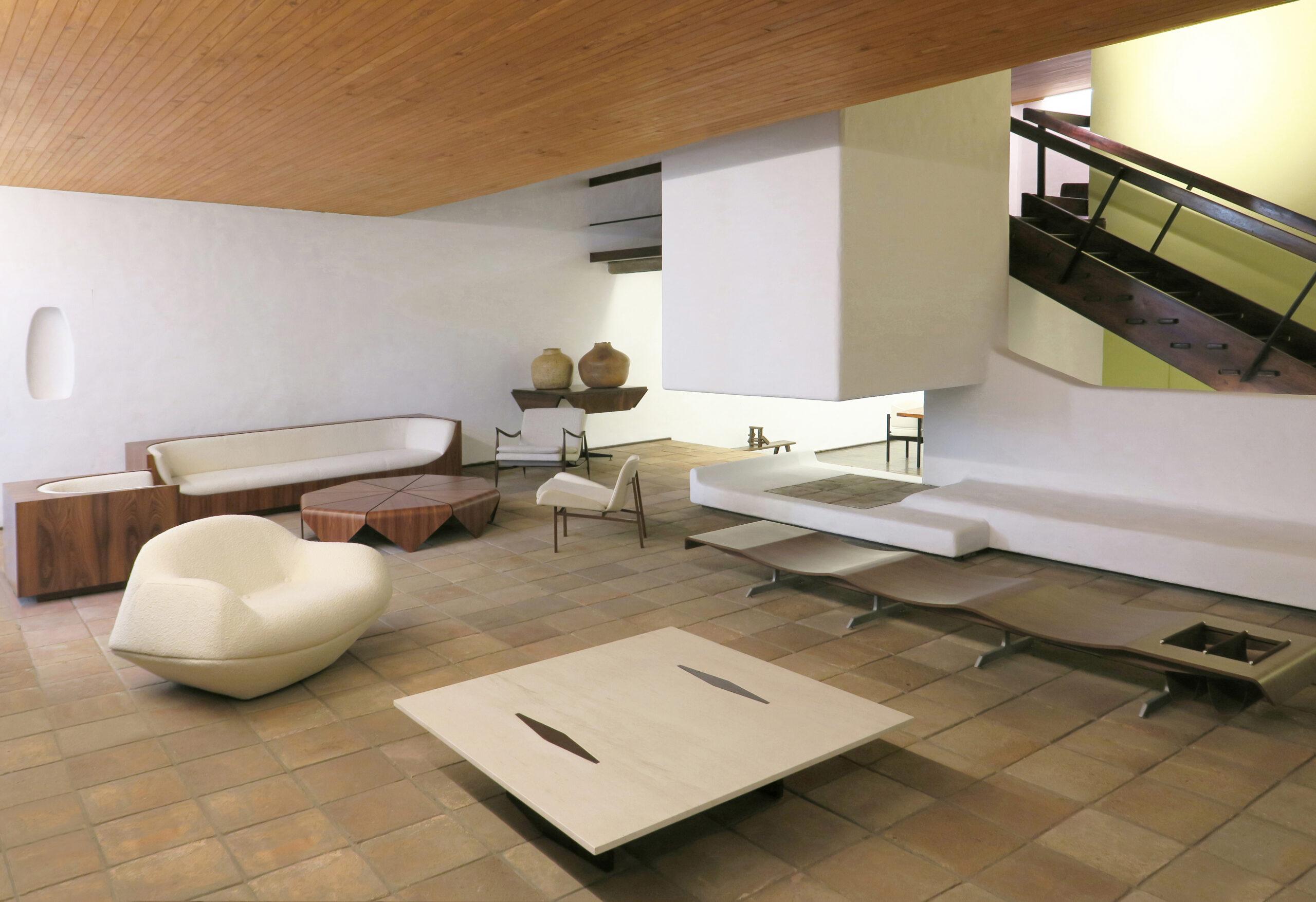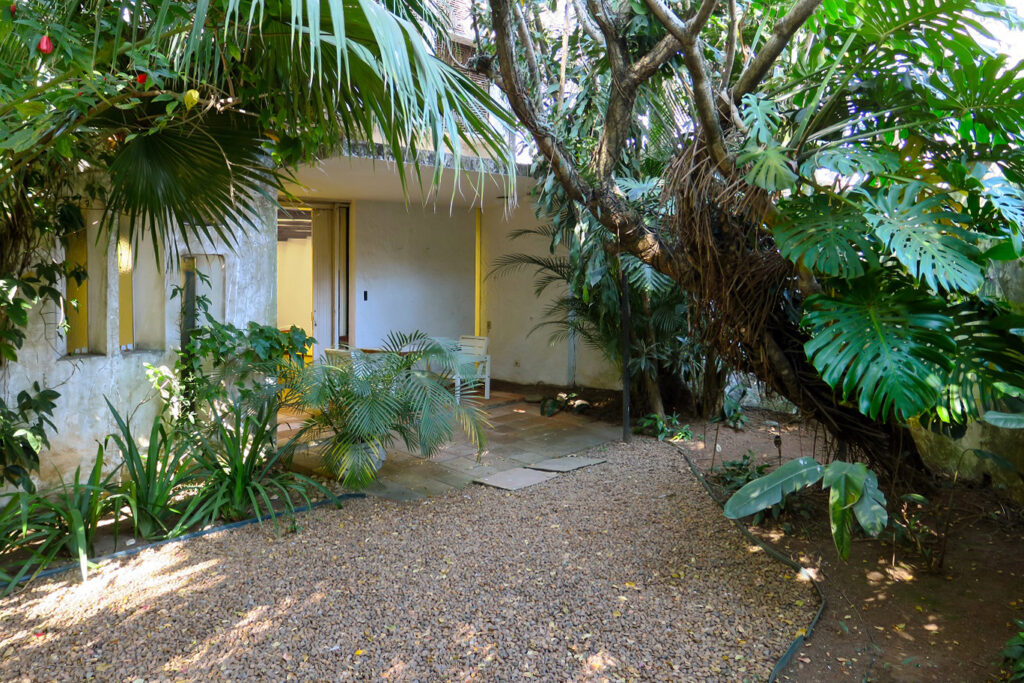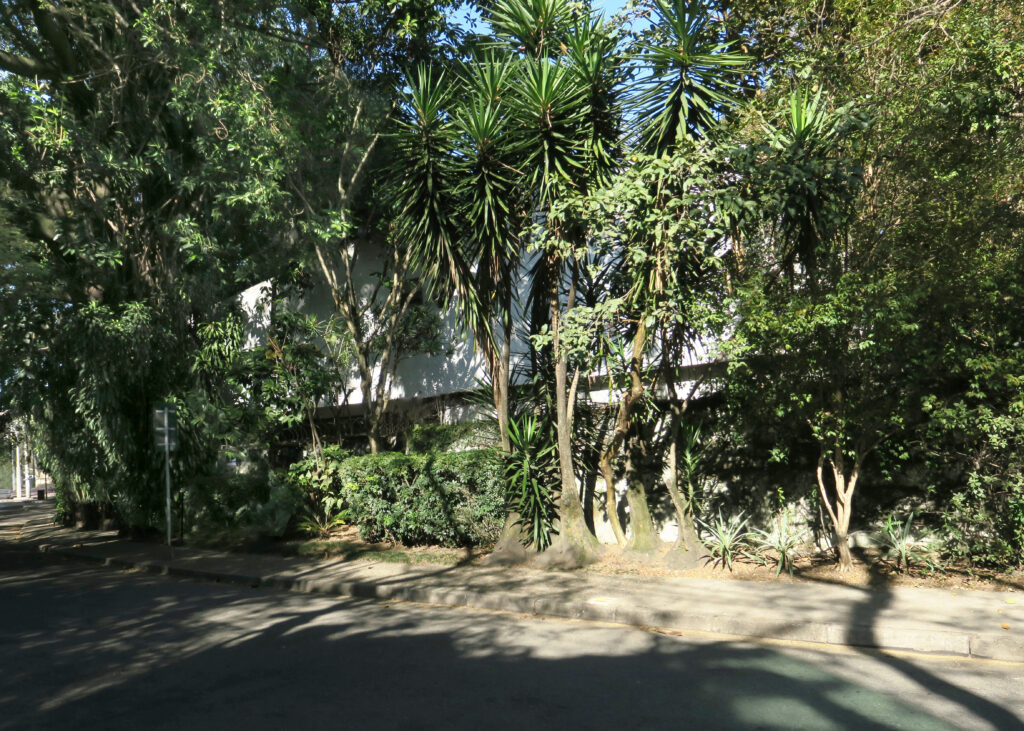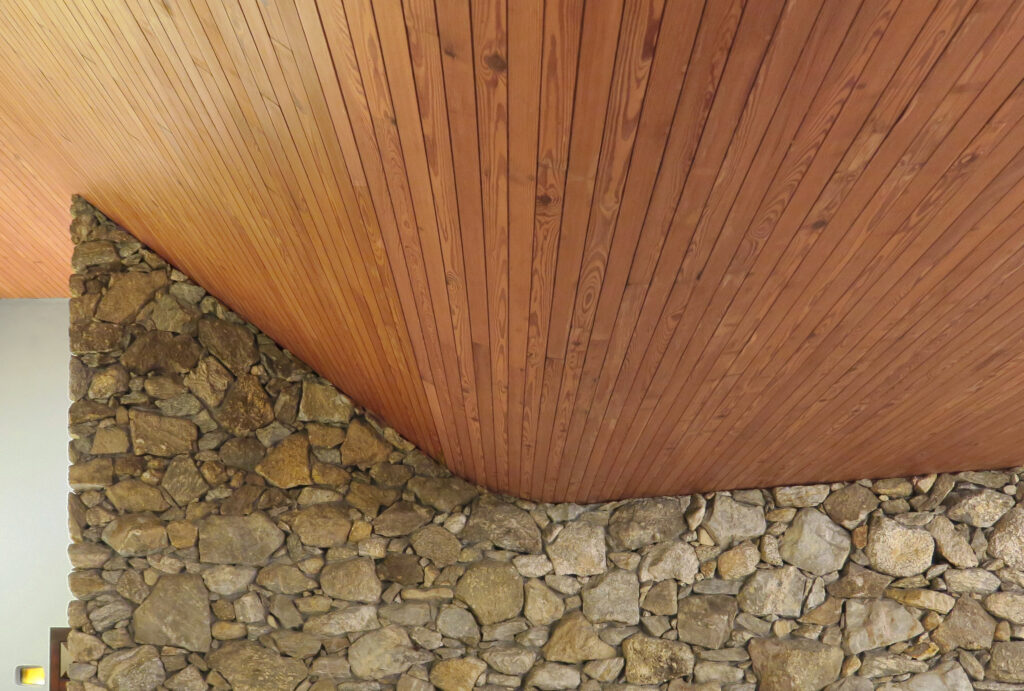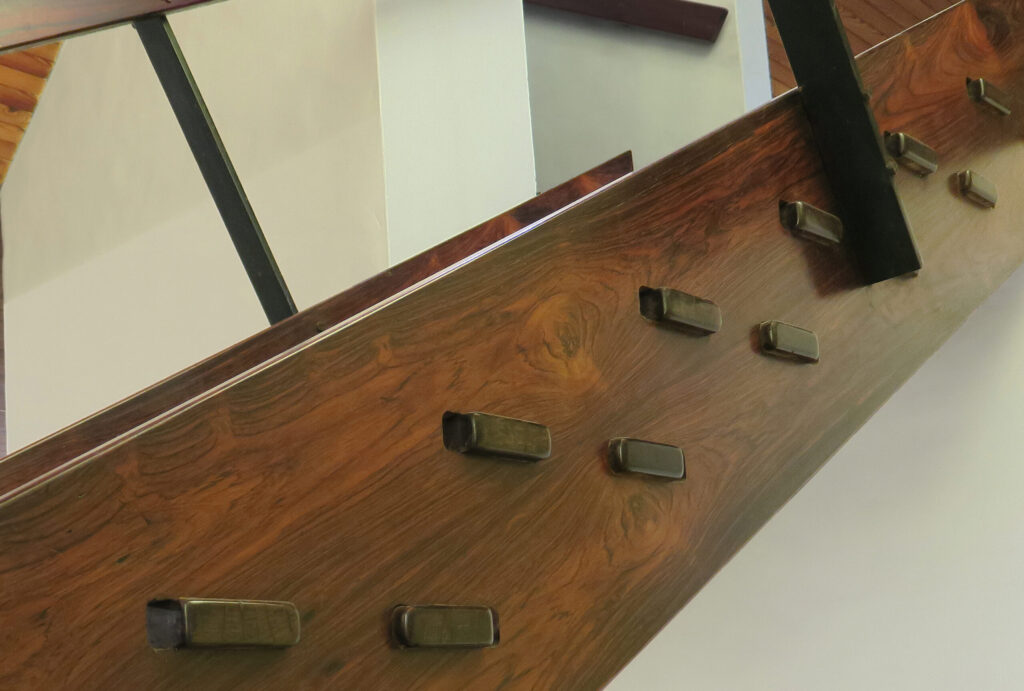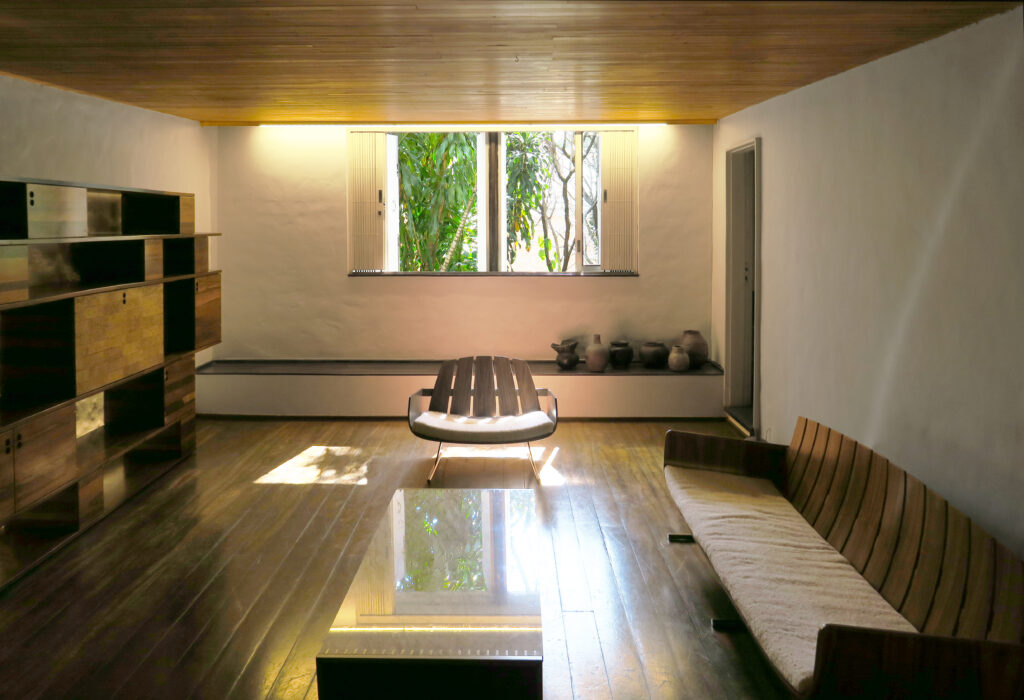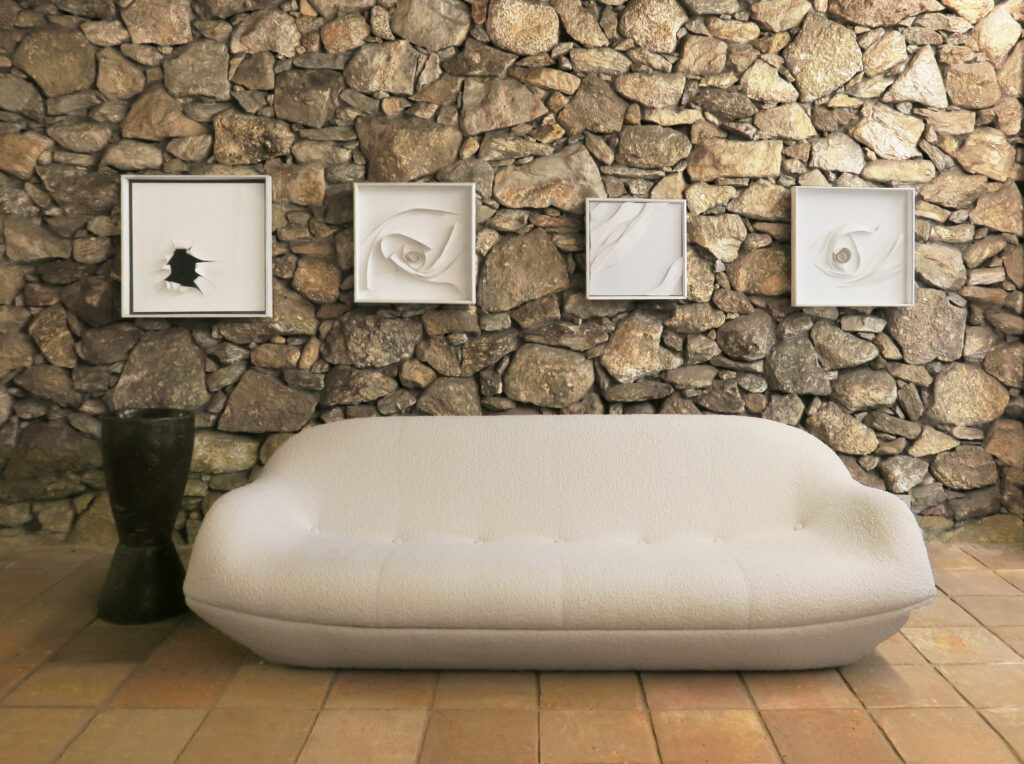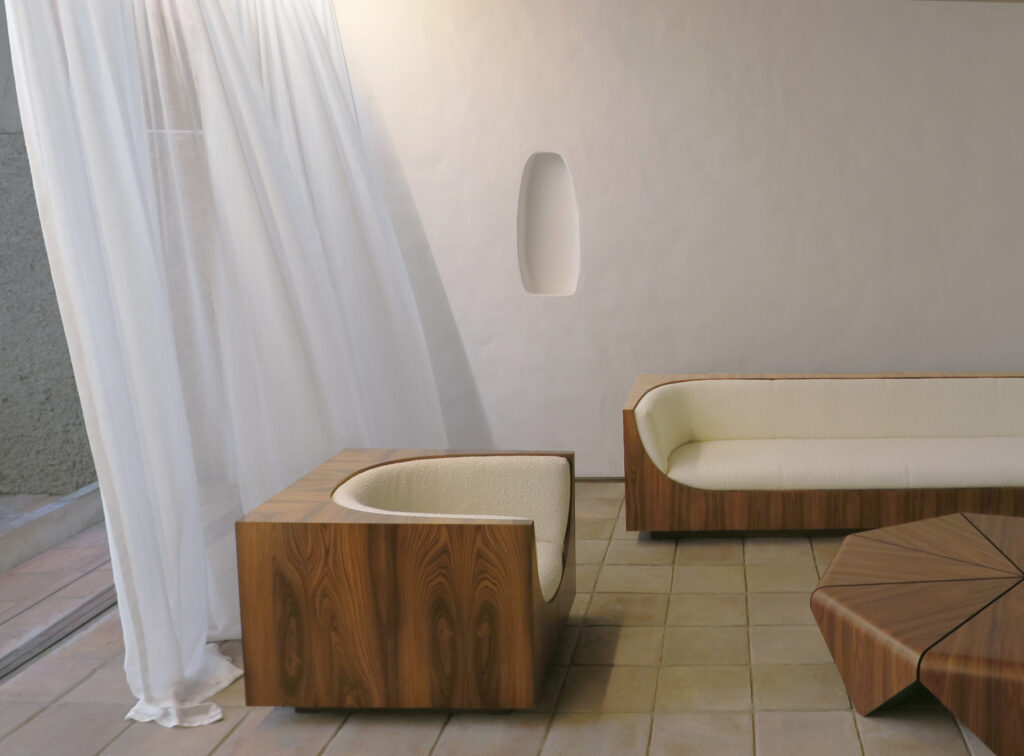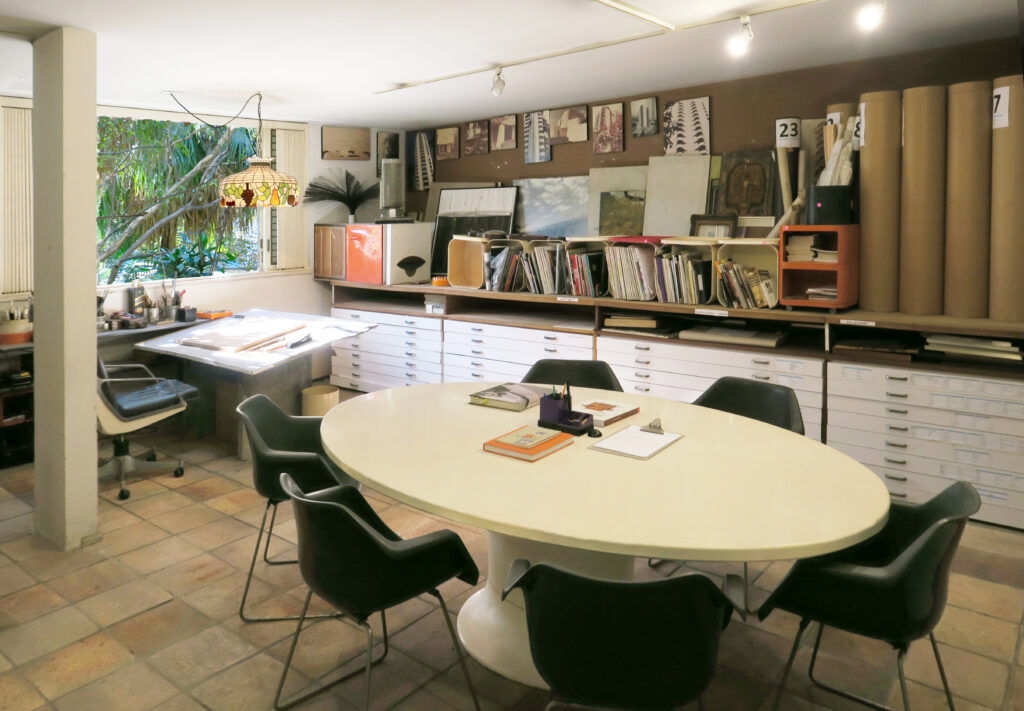A house, especially an architect’s own home, is one of the most personal architectural typologies. Given its smaller scale, it is certainly an opportunity to experiment with ideas and concepts. And, when the client to please is the architect him/herself, it is an even more unrestrained chance to experiment freely and showcase their vision.
That was the case of the house the late Polish-Brazilian architect and designer Jorge Zalszupin conceived for himself and his family to live in, as well as to be an actual example of his unique interpretation of Modernism. Built 60 years ago and located in São Paulo not far from what is now one of the city’s main design destinations, the house today can barely be seen from the street, its volume barely distinguished between the surrounding overgrown trees and flora, as if they are a natural shield from the outside world.
But once inside, the house truly reveals itself – a surprising play of interior heights and choreographed spatial flow, with an elegant mix of materials and details that reference some of the exquisite craftmanship of Zalszupin’s furniture pieces. There is the undulating ceiling of riga pine, telling of Zalszupin’s interest in Scandinavian design, the jacaranda stairs and its elegant wood joints, the rustic ceramic flooring cooling and grounding the interior, the whitewashed walls, the carefully calibrated play of light, the colorful glass wall openings as if they were a gesture to Le Corbusier’s Ronchamp Chapel (The Swiss architect being an early inspiration for the designer). The house was also an early precursor of the live-work concept, dubbing as his atelier and office where all he developed all of his architecture and design work and business.
Renown for infusing Brazilian Modernism with a certain softness from material sensuality, the house very much reflects these two seemingly contradictory characteristics. The house is undeniably Modern in its originality and uniqueness, but also offers an inviting, cozy atmosphere. The overall shelter has a womblike feel perhaps not surprising for an immigrant and a European born designer who survived the devastation and horrors of WWII.
Empty since the designer’s passing in 2020, the house is now being turned into a cultural space, joining the trend of activating such iconic landmark houses to bring their architects’ visions to a more engaged contemporary audience. The initiative is spearheaded by the dynamic Lissa Carmona, design curator, entrepreneur and CEO of ETEL, the company responsible for the re-edition of the much in demand pieces by Zalszupin. A passionate ambassador of Brazilian design and architecture, Carmona sees the house as an opportunity to build on the designer’s legacy. The initial exhibit at the space featured an installation of some of the artwork by the designer (materials, textures, and shapes experiments) and a selection of his furniture designs like the classic Tea Trolley (1959) and the CUBO armchair and sofa (1970s).
This June, Zalszupin would have turned 100 years old and to celebrate ETEL is organizing an exhibit featuring recently discovered sketches and historical pictures, along with some of his most iconic pieces. Scheduled to open in the company’s Milan’s showroom during Salone di Mobili / Milan Design Week, the exhibit then continues, later in the month, back at the house where it all started.
https://www.casazalszupin.com/
By Paul Clemence, photographer, writer, author
Top Photo: Living room at Casa Zalszupin – photo by Paul Clemence

